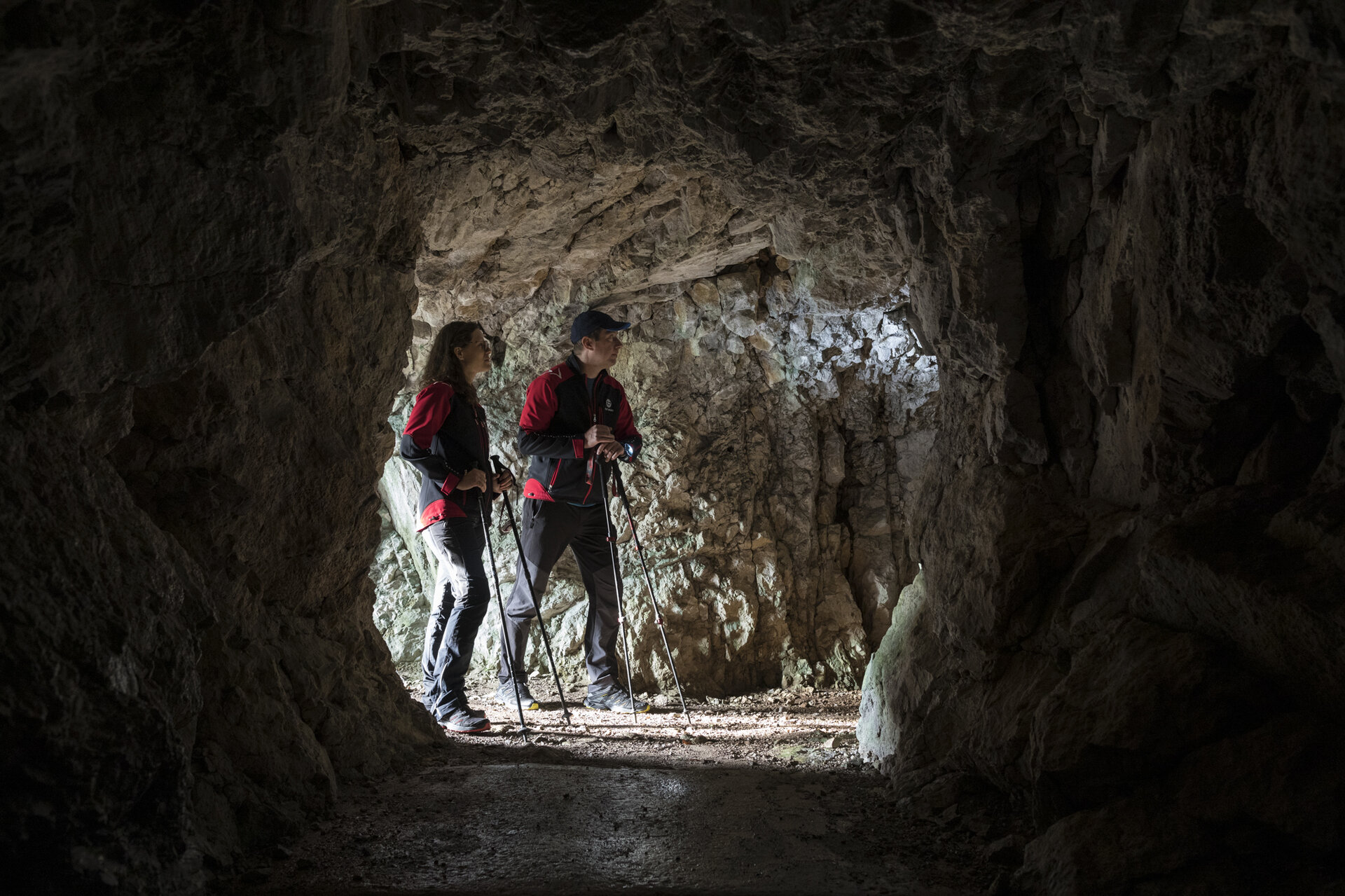Where:
Mt Vodice
5213 Kanal
info@thewalkofpeace.com
+386 5 389 0167
Outdoor Museum Vodice

The circular path of the outdoor museum leads through trenches and typical multilevel caves. On the top of Vodice stands a mausoleum erected in honour of Italian General Maurizio Ferrante Gonzaga. He wanted to be buried in the place where his soldiers were dying during the First World War. But because of the Second World War, the mausoleum was not completed and the general was never buried there.
Mt. Vodice, situated in the southwest part of the Banjška planota Plateau, affords a splendid view over the nearby Mt. Sveta Gora, and its neighbour, Mt. Sabotin, stretching all the way to the Adriatic. An indicated circular route through the outdoor museum takes you past the mausoleum of General Maurizio Ferrante Gonzaga and the monument to the three alpini battalions, Monte Levana, Aosta, and Val Toce, who conquered the north-western part of Mt.Vodice on 18 May 1917. Also interesting to see are several-storey caves and numerous preserved trenches. On 12 May 1917 the Italian Army started the Tenth Isonzo Battle. Shelling with gas and incendiary shells was directed towards Austro-Hungarian positions in the area of Zagora–Paljevo–Plave–Globno, and most intensely towards Mt. Prižnica (Hill 383). On 14 May 1917 the infantry troops of the Italian 2nd Corps, under the command of General Badoglio, gradually conquered Zagora, Zagomila, Mt. Kuk and Mt. Košutnik. On the 18th of May they also conquered Mt. Prižnica and the summit of Mt. Vodice, and later its southeast ridge, all the way to the saddle of Preški vrh. From there, it was possible for the Italians to watch the Grgar basin (Grgarska kotlina) where the Austro-Hungarian Army had an important supply centre and a muster area for their reserves. In the following months the ridge of Vodice remained a scene of bloody battles that ended without any major success but with numerous casualties on either side. On the night of 23/24 August 1917, the Austro-Hungarian soldiers withdrew from these positions due to the unendurable pressure of the Italian eleventh offensive, and occupied new positions of defence on the Banjška planota Plateau.
Leaflet with information about the Walk of peace: link
Discover more



